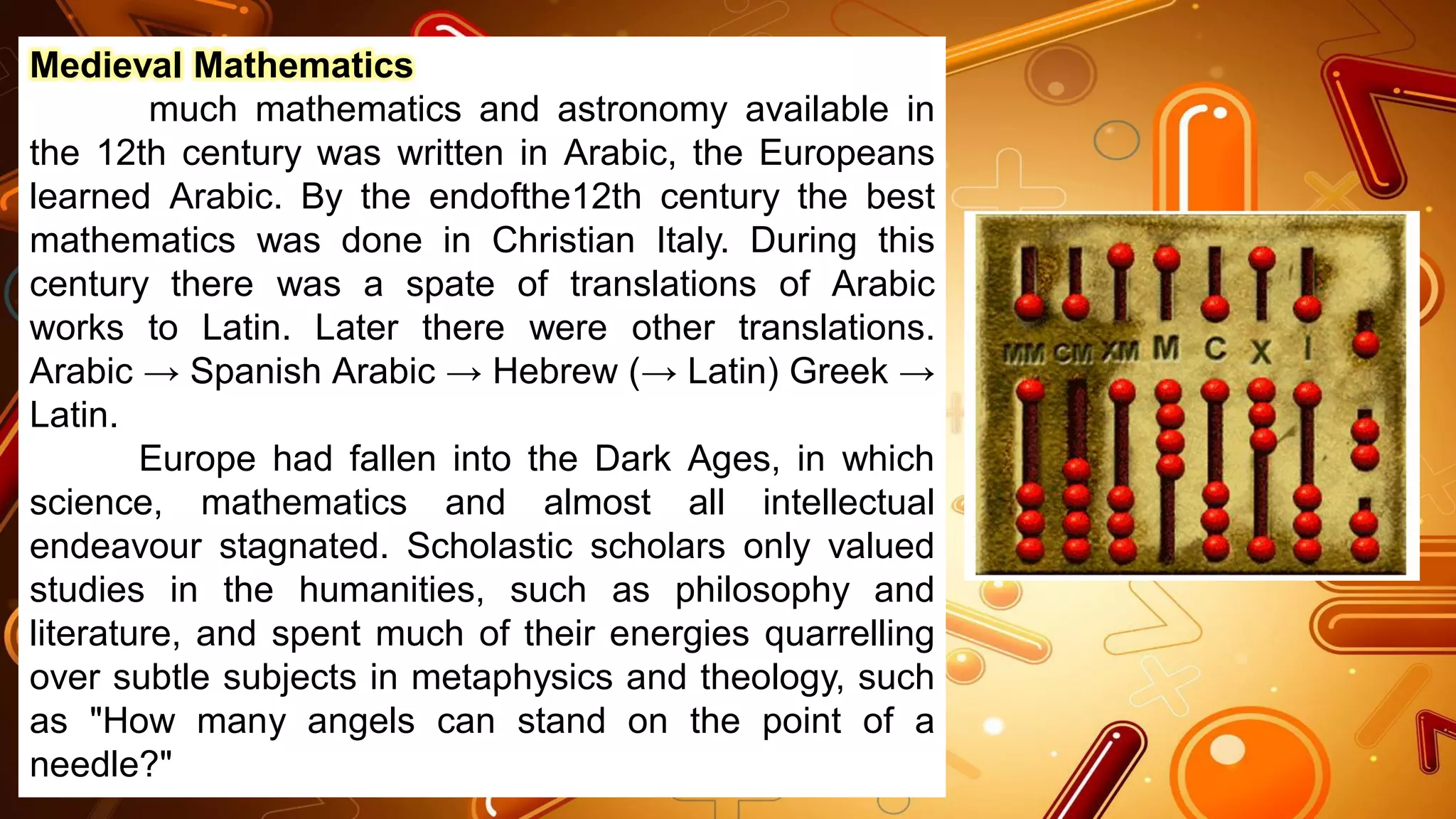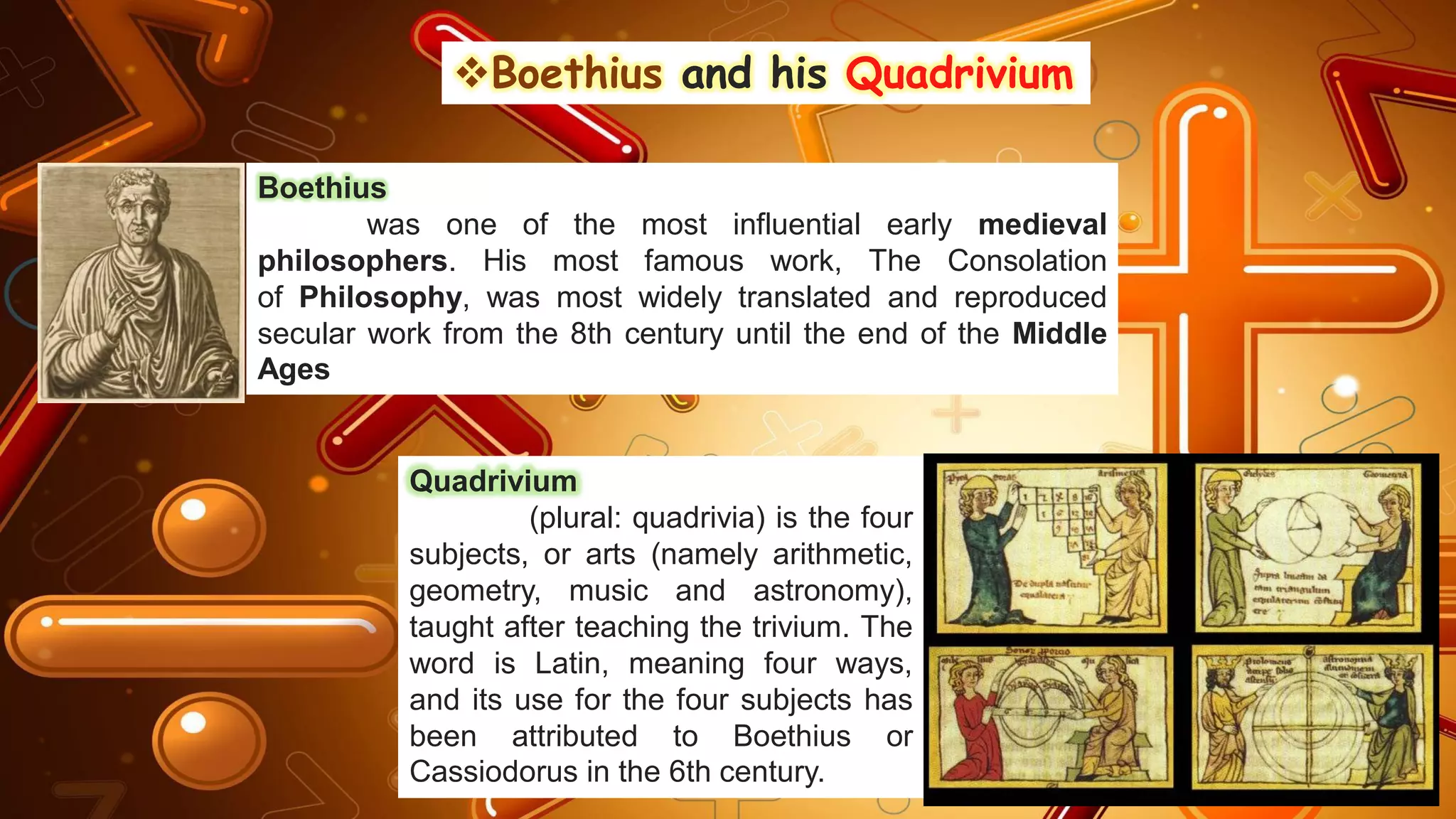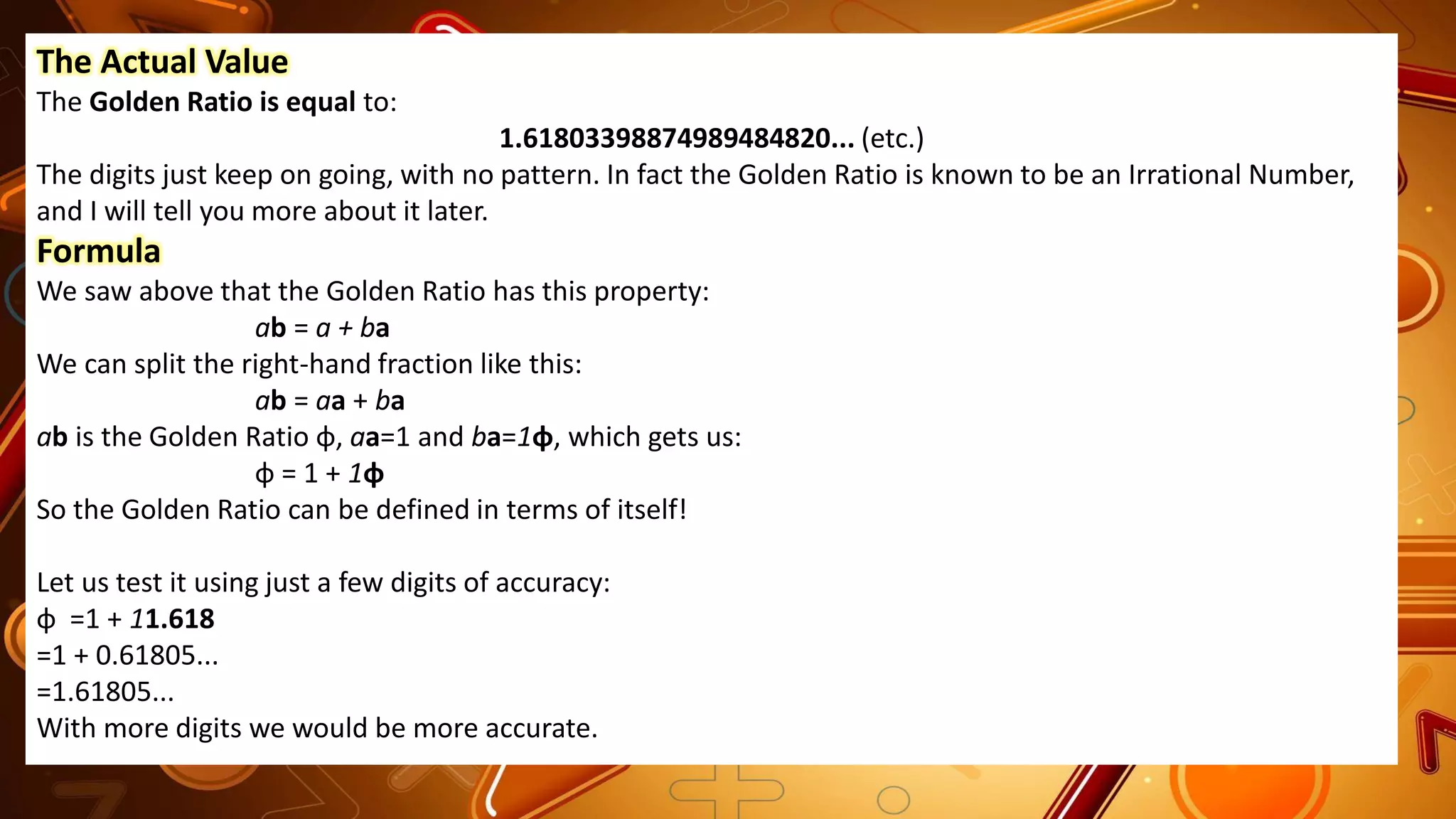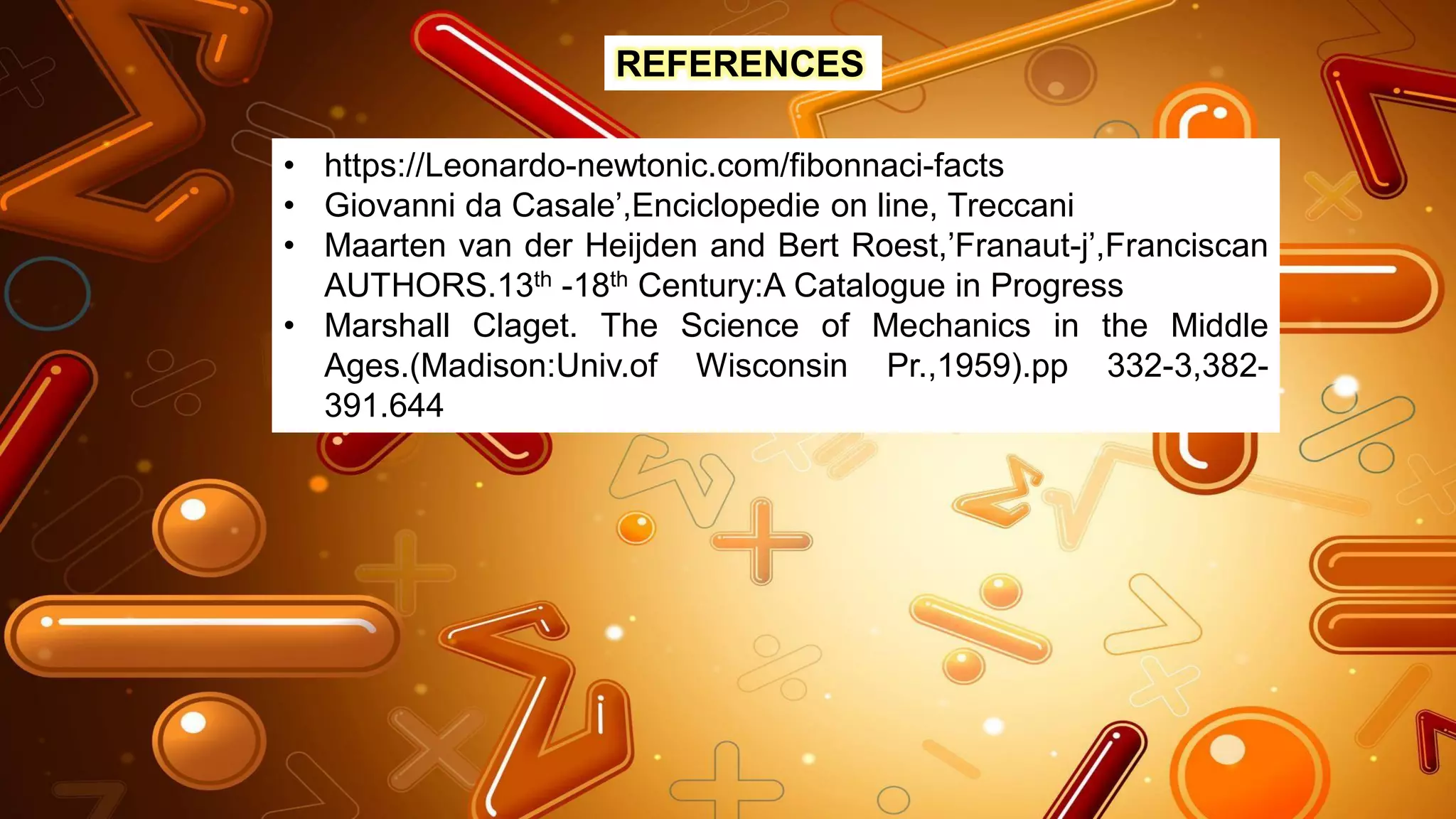The document discusses medieval mathematics from the 12th-14th centuries. It provides biographies of several important medieval mathematicians including Fibonacci, who introduced the Fibonacci sequence to Western Europe and studied rabbit populations. It also discusses Nicole Oresme who proved the divergence of the harmonic series and Giovanni di Casali who analyzed accelerated motion graphically. The document notes that during this time, Europeans learned mathematics from Arabic sources that had been translated to Latin.



















